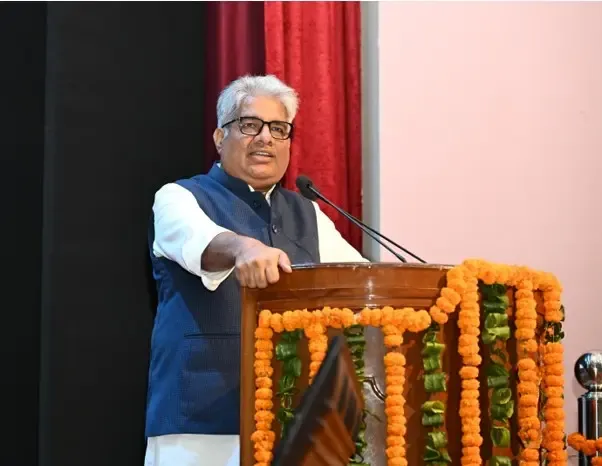What New Initiatives Did Environment Minister Bhupender Yadav Introduce for Species Conservation?

Synopsis
Key Takeaways
- Five national projects launched for species conservation.
- Focus on conflict management between humans and wildlife.
- Establishment of a Centre of Excellence for conflict resolution.
- The theme emphasizes coexistence and community support.
- Partnerships among various institutions are crucial for success.
New Delhi, Oct 6 (NationPress) In celebration of Wildlife Week 2025, the Union Minister of Environment, Forest and Climate Change, Bhupender Yadav, unveiled five significant national projects aimed at species conservation and conflict management.
Among these projects are the Implementation of Action Plan for Project Dolphin, Project Sloth Bear, and Project Gharial and Tigers Outside Tiger Reserve.
Additionally, Yadav launched a project to establish the Centre of Excellence for Human-Wildlife Conflict Management (CoE-HWC) at the Salim Ali Centre for Ornithology and Natural History. This initiative is designed to enhance policy, research, and practical solutions for mitigating human-wildlife conflicts.
The Minister appealed to all stakeholders to bolster partnerships for conservation, stating, “Wildlife protection is not just a duty, but a shared responsibility for ensuring harmony between nature and people.”
The Wildlife Week 2025 festivities were organized by the Ministry in collaboration with the Wildlife Institute of India (WII), Indian Council of Forestry Research and Education (ICFRE), Indira Gandhi National Forest Academy (IGNFA), and Forest Research Institute (FRI) at the historic Hari Singh Auditorium, located on the FRI Campus in Dehradun.
This year's theme, ‘Human-Wildlife Coexistence’, addresses the increasing instances of human-wildlife interactions over recent years, aiming to foster community support to transition from conflict to coexistence.
Previously, Yadav highlighted various important announcements made by Prime Minister Narendra Modi during the 7th National Board for Wildlife (NBWL) meeting, reiterating the Ministry’s dedication to biodiversity conservation alongside human-wildlife coexistence.
He stressed the urgent need for innovative, technology-driven, and community-oriented strategies in wildlife management.
The Minister also revealed four national-level action plans and field guides for species population assessments and monitoring: Second Cycle of Population Estimation of River Dolphins and Other Cetaceans; All India Tiger Estimation Cycle–6; Action Plan for the Second Cycle of Snow Leopard Population Estimation; and the Progress Report on the Population Estimation of Great Indian Bustard and Lesser Florican.
The event was attended by senior officials from the Ministry, representatives from State Forest Departments, scientists, academicians, students, and conservation professionals.
The Wildlife Week Celebrations 2025 highlighted the collaboration among WII, ICFRE, IGNFA, and FRI, demonstrating a comprehensive, inter-institutional strategy for wildlife conservation, research, and policy integration.









